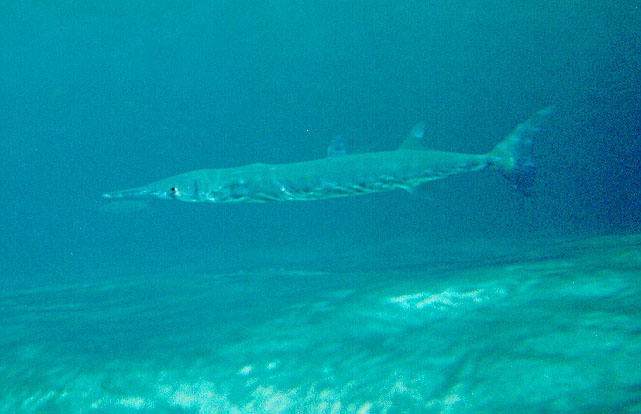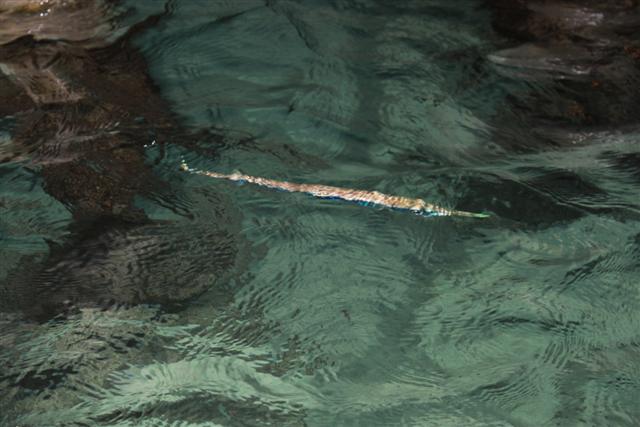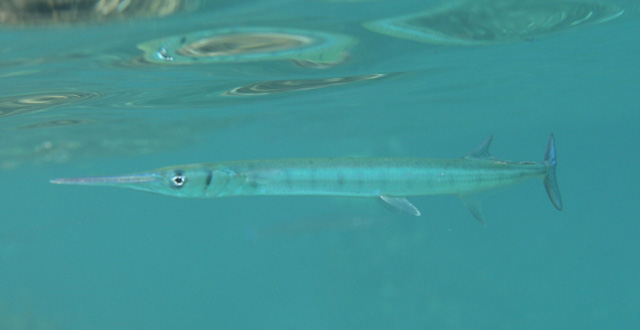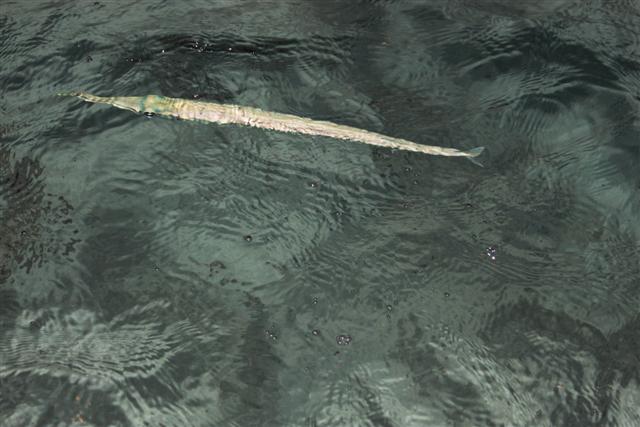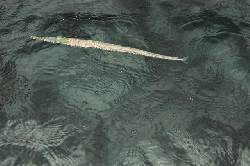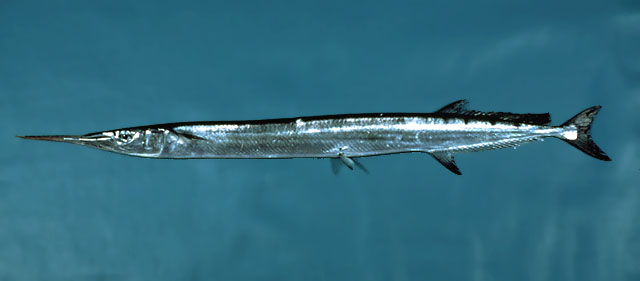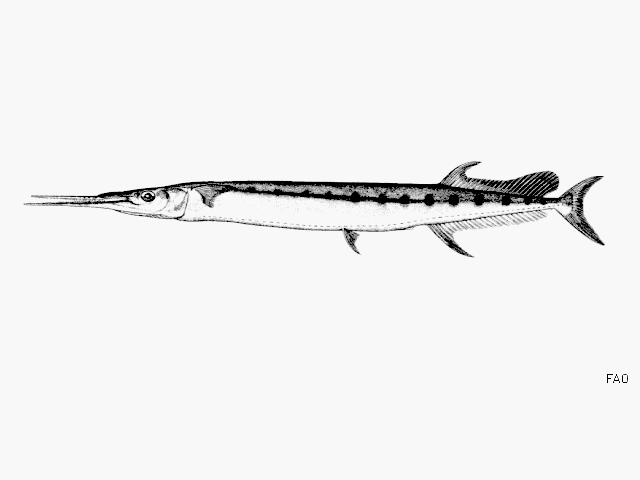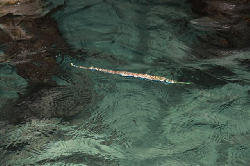Ablennes hians (Valenciennes, 1846)
Description
Dorsal spines (total): 0; Dorsal soft rays (total): 23 - 26; Anal spines: 0; Anal soft rays: 24 - 28; Vertebrae: 86 - 93. Dark bluish dorsally, silvery white ventrally with black blotches on middle of body (Ref. 5317). Body greatly compressed laterally; anterior parts of dorsal and anal fins with high falcate lobes. Pectoral fins falcate; about 12-14 prominent dark vertical bars on body; juveniles and adults have an elevated black lobe in the posterior part of the dorsal fin.
Common Names
No common names available.
Taxonomic Hierarchy
Kingdom: Animalia
Phylum: Chordata
Class: Teleostei
Order: Beloniformes
Family: Belonidae
Genus: Ablennes
Species: Ablennes hians (Valenciennes, 1846)
Climate Zone
Location
Biology
Inhabits neritic and oceanic waters but more often found near islands (Ref. 5213). Found in estuaries (Ref. 26340), and coastal rivers (Ref. 33587). Sometimes forming large schools (Ref. 5217). Feeds mainly on small fishes (Ref. 9279). Oviparous (Ref. 205). Eggs may be found attached to objects in the water by filaments on the egg's surface (Ref. 205). Since the jaws are frequently broken, the maximum length is given as body length excluding head and caudal fin. Usually caught with the help of artificial lights (Ref. 9279). Marketed fresh and salted; smoked or frozen (Ref. 9987). Market limited due to the green-colored flesh (Ref. 5217). In females, only left gonad is developed, and in males the right gonad is small or absent (Ref. 26938).
Habitat
brackish
Conservation Status
Least Concern
Threat to Humans
Harmless
